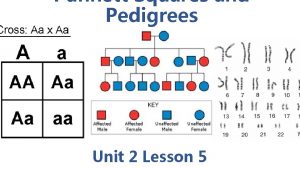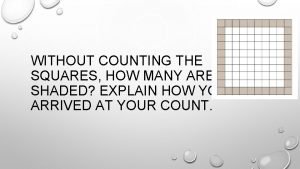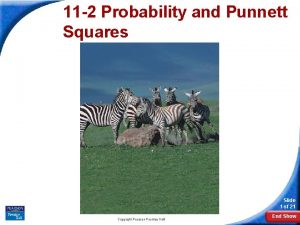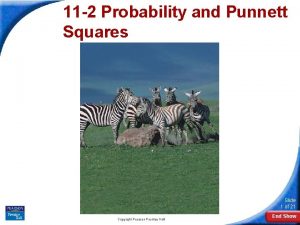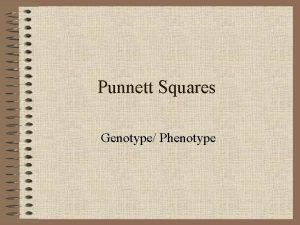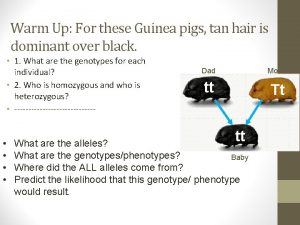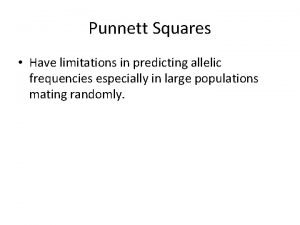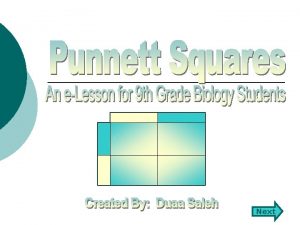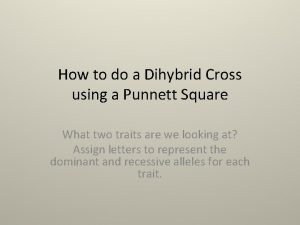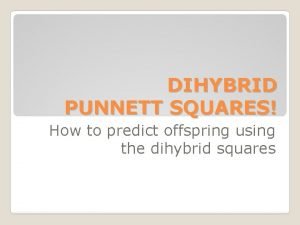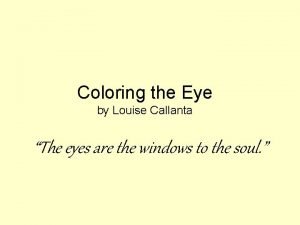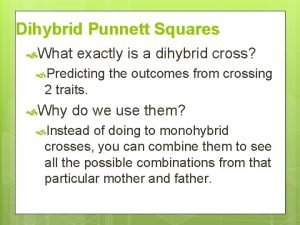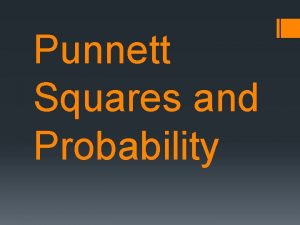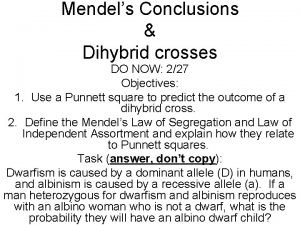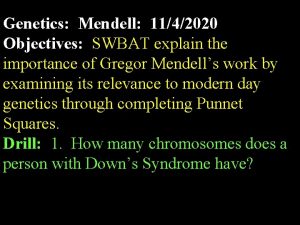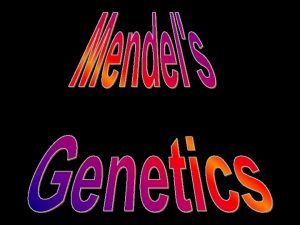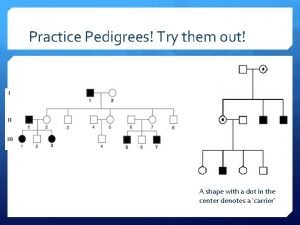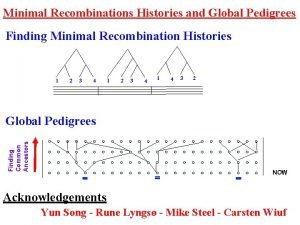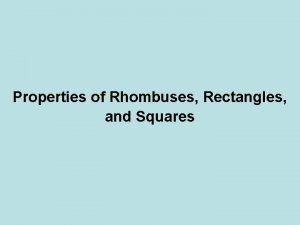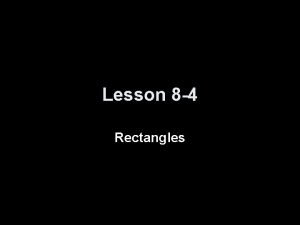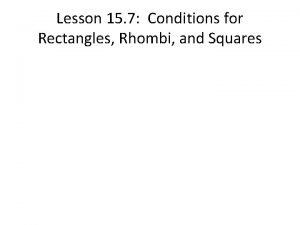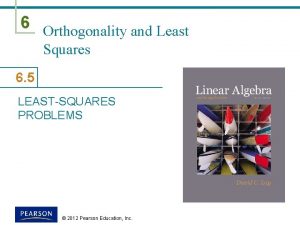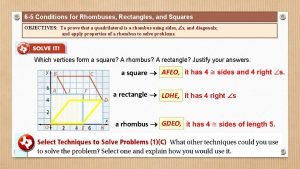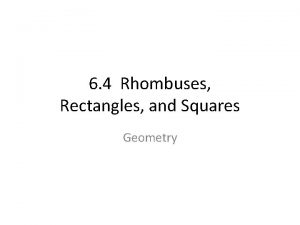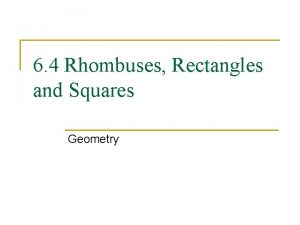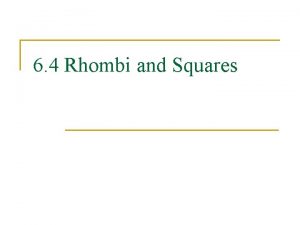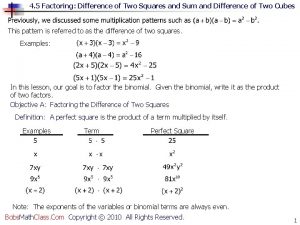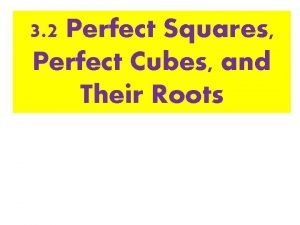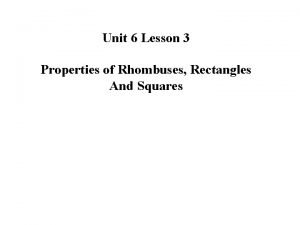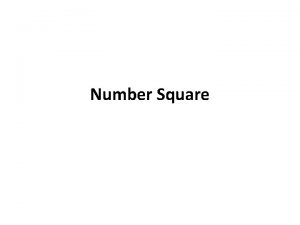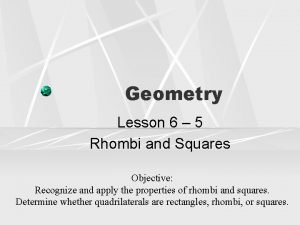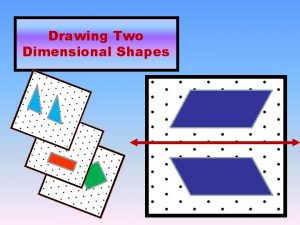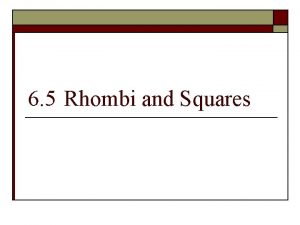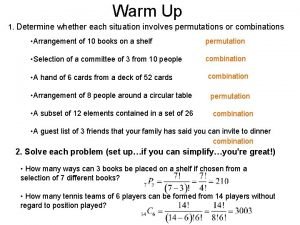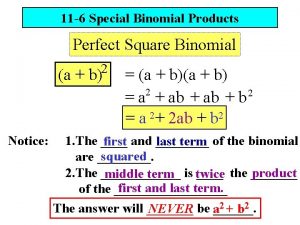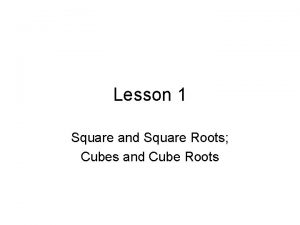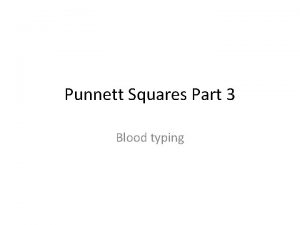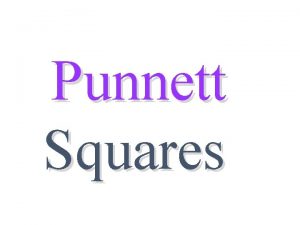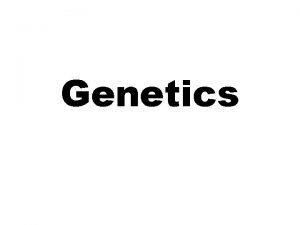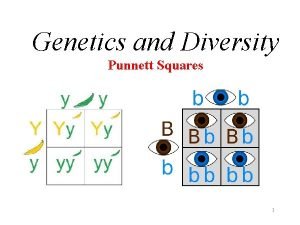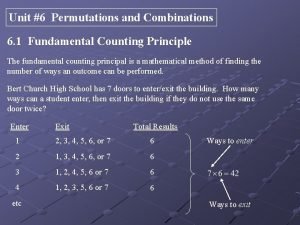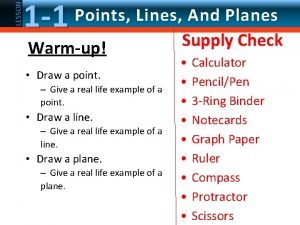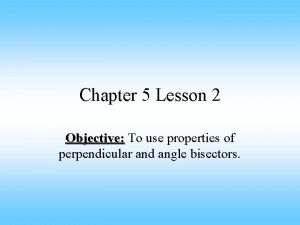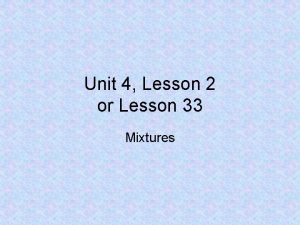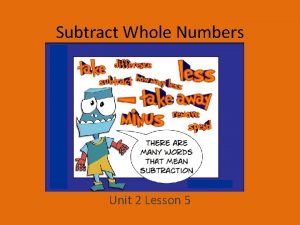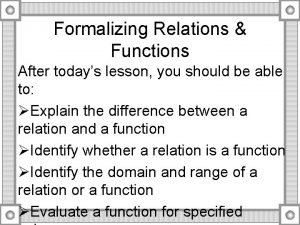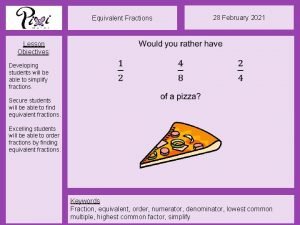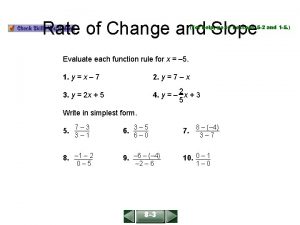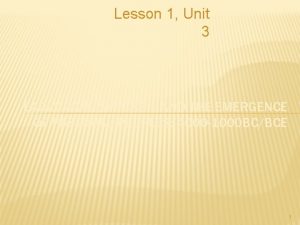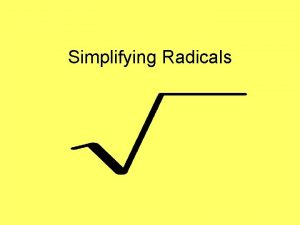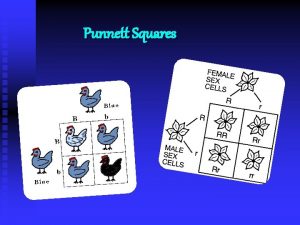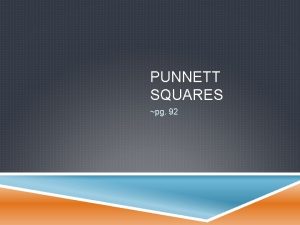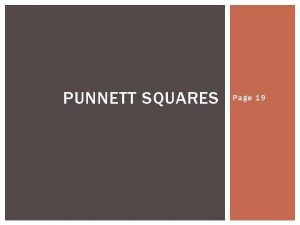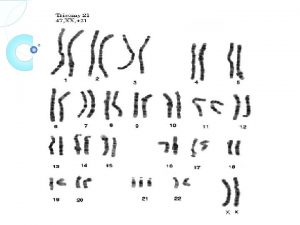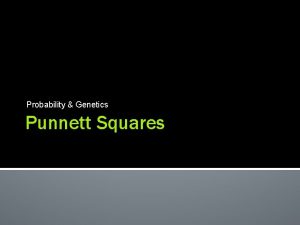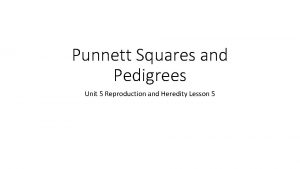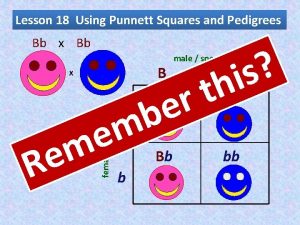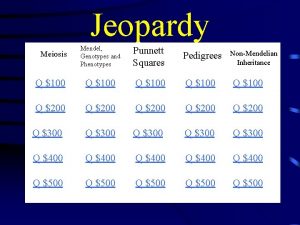Punnett Squares and Pedigrees Unit 2 Lesson 5











































































































- Slides: 107

Punnett Squares and Pedigrees Unit 2 Lesson 5

• RED SLIDE: These are notes that are very important and should be recorded or highlighted in your science book. – You will see an image of a page in your book when it is necessary to highlight! Copyright © 2010 Ryan P. Murphy

-Please make notes legible and use indentations when appropriate. -Example of indent. -Skip a line between topics -Don’t skip pages -Make visuals clear and well drawn. Please Label Double Helix Phosphate Backbone Nitrogen Base

• RED SLIDE: These are notes that are very important and should be recorded in your science journal. • BLACK SLIDE: Pay attention, follow directions, complete projects as described answer required questions neatly. Copyright © 2010 Ryan P. Murphy

• Keep an eye out for “The-Owl” and raise your hand as soon as you see him. – He will be hiding somewhere in the slideshow Copyright © 2010 Ryan P. Murphy

• Keep an eye out for “The-Owl” and raise your hand as soon as you see him. – He will be hiding somewhere in the slideshow “Hoot, Hoot” “Good Luck!” Copyright © 2010 Ryan P. Murphy

l Punnett Square: A tool/diagram used for understanding the patterns of heredity l Used to predict the possible genotypes of offspring in a given cross The top of the Punnett square shows the alleles for 1 parent, and the left side shows the alleles for the other parent. l Each square shows an allele combination that would be possible with those 2 given parents l Pg. 138

Pg. 139

Pg. 139

Pg. 139

Pg. 139

Pg. 139

Pg. 139

Pg. 139

Pg. 139

Pg. 139

Pg. 139

Pg. 139

Pg. 139

Pg. 139

Pg. 139

Pg. 139

Pg. 139

Pg. 139

Pg. 139

Pg. 139

Pg. 139

Pg. 139

Pg. 139

Pg. 139

Pg. 139

Punnett Squares

• When a man and women decide to have a child, who determines the gender? Copyright© 2010 Ryan P. Murphy

• Use the Punnett Square below to help you. XX=Female XY=Male Copyright© 2010 Ryan P. Murphy

• Use the Punnett Square below to help you. XX=Female XY=Male Copyright© 2010 Ryan P. Murphy

• Use the Punnett Square below to help you. XX=Female XY=Male Copyright© 2010 Ryan P. Murphy

• Use the Punnett Square below to help you. XX=Female XY=Male Copyright© 2010 Ryan P. Murphy

• Use the Punnett Square below to help you. XX=Female XY=Male Copyright© 2010 Ryan P. Murphy

• Use the Punnett Square below to help you. XX=Female XY=Male Copyright© 2010 Ryan P. Murphy

• Use the Punnett Square below to help you. XX=Female XY=Male Copyright© 2010 Ryan P. Murphy

• Use the Punnett Square below to help you. XX=Female XY=Male Copyright© 2010 Ryan P. Murphy

• Use the Punnett Square below to help you. XX=Female XY=Male Copyright© 2010 Ryan P. Murphy

• Use the Punnett Square below to help you. XX=Female XY=Male Copyright© 2010 Ryan P. Murphy

• Use the Punnett Square below to help you. XX=Female XY=Male Copyright© 2010 Ryan P. Murphy

• Use the Punnett Square below to help you. XX=Female XY=Male Copyright© 2010 Ryan P. Murphy

• Use the Punnett Square below to help you. XX=Female XY=Male Copyright© 2010 Ryan P. Murphy

• Use the Punnett Square below to help you. XX=Female XY=Male Copyright© 2010 Ryan P. Murphy

• Use the Punnett Square below to help you. XX=Female XY=Male Copyright© 2010 Ryan P. Murphy

• Use the Punnett Square below to help you. XX=Female XY=Male Copyright© 2010 Ryan P. Murphy

• Use the Punnett Square below to help you. XX=Female XY=Male Copyright© 2010 Ryan P. Murphy

• Use the Punnett Square below to help you. XX=Female XY=Male Copyright© 2010 Ryan P. Murphy

• Use the Punnett Square below to help you. XX=Female XY=Male Copyright© 2010 Ryan P. Murphy

• Use the Punnett Square below to help you. XX=Female XY=Male Copyright© 2010 Ryan P. Murphy

• Use the Punnett Square below to help you. XX=Female XY=Male Copyright© 2010 Ryan P. Murphy

• Use the Punnett Square below to help you. XX=Female XY=Male Who determines gender? Copyright© 2010 Ryan P. Murphy

• Answer! The male, he is the only one who carries the Y chromosome. Copyright© 2010 Ryan P. Murphy

• Answer! The male, he is the only one who carries the Y chromosome. If he gives the X it is female, if he gives the Y it is male. Copyright© 2010 Ryan P. Murphy

• Answer! The male, he is the only one who carries the Y chromosome. If he gives the X it is female, if he gives the Y it is male. The woman is XX and can only give the X. Copyright© 2010 Ryan P. Murphy

• What is the probability that a dice will land on 6? Copyright© 2010 Ryan P. Murphy

• Answer: The odds and 1 -6 or 16. 67% Copyright© 2010 Ryan P. Murphy

• People who look at this machine do not understand probability. Copyright© 2010 Ryan P. Murphy

• This machine keeps track of the colors and numbers on roulette. Copyright© 2010 Ryan P. Murphy

• This machine keeps track of the colors and numbers on roulette. Copyright© 2010 Ryan P. Murphy

• This machine keeps track of the colors and numbers on roulette. – “Hey Jimmy, the history board shows that red hasn’t come up in a while, it’s due. ” Copyright© 2010 Ryan P. Murphy

• History doesn’t determine probability in mathematics. If the probability is 50/50, it will always be 50/50. Black will be due 50% of the time.

“Dude” “Black is hot right now. ” “Bet Black. ” Copyright© 2010 Ryan P. Murphy

• Roulette isn’t a 50/50 chance of winning because of the two green slots is where the house wins if you didn’t place your bet on green. Copyright© 2010 Ryan P. Murphy

• Roulette isn’t a 50/50 chance of winning because of the two green slots is where the house wins if you didn’t place your bet on green. 48% Chance you will win, 52% you will lose. Copyright© 2010 Ryan P. Murphy


“Jeepers!” “Probability showed I would lose and I did. ” “How did this happen? ”

• Now, the probability that if you flip a coin four times, is that 50% will land on heads, and 50% will land tails. Copyright© 2010 Ryan P. Murphy

• Now, the probability that if you flip a coin four times, is that 50% will land on heads, and 50% will land tails. – Let’s see if our results match probability? Copyright© 2010 Ryan P. Murphy

• Genetics deals heavily with probability, or the likelihood that a particular event will occur. Copyright© 2010 Ryan P. Murphy

l l Genetics deals heavily with probability, Probability is the mathematical chance of a specific outcome in relation to the total number of possible outcomes Probability can be expressed in the form of a ratio, which compares 2 quantities l 1: 4 (reads one to four) Probability can also be expressed as a percentage, which compares a number to 100 (how many times a certain outcome might happen out of 100 chances Pg. 140

l Use the Sample Problem on pg. 140 to complete #8 on pg. 141.

Pg. 141

What is the percent chance that the offspring will have green color?

What is the percent chance that the offspring will have green color? 50%

What is the percent chance that the offspring will have yellow color?

What is the percent chance that the offspring will have green color? 50%

What is the percent chance that the offspring will be tall? T=Tall T=short

What is the percent chance that the offspring will be tall? T=Tall T=short 75%

What is the percent chance that the offspring will be short? T=Tall T=short

What is the percent chance that the offspring will be short? T=Tall T=short 25%

Pedigree Charts And NO, I don’t mean dog food!

• Pedigree Chart: A diagram that shows the occurrence and appearance or phenotypes of a particular gene or organism and its ancestors from one generation to the next.

• Pedigree Chart: A diagram that shows the occurrence and appearance or phenotypes of a particular gene or organism and its ancestors from one generation to the next. Males are square Females are circles

• Video Review! Pedigree Charts

l. A pedigree traces the occurrence of a trait through generations of a family. l Pedigrees can be used to trace any inherited trait l Very useful in tracing inherited disorders Pg. 142

l Squares represent males l Circles represent females l A solid square or circle indicates that a person HAS a certain trait l A half-filled square or circle indicates that person is a CARRIER of the trait Pg. 142










• Pedigree Chart for color blindness

• Pedigree Chart for color blindness

• Pedigree Chart for color blindness

• Pedigree Chart for color blindness

• Pedigree Chart for color blindness

• Pedigree Chart for color blindness

• Pedigree Chart for color blindness

• Pedigree Chart for color blindness
 Pedigree punnett square
Pedigree punnett square How many squares
How many squares 11-2 probability and punnett squares
11-2 probability and punnett squares Section 11-2 probability and punnett squares
Section 11-2 probability and punnett squares Section 11-2 probability and punnett squares
Section 11-2 probability and punnett squares Tt x tt punnett square
Tt x tt punnett square Punnett square phenotype
Punnett square phenotype My age
My age Pedigrees and karyotypes
Pedigrees and karyotypes H h
H h Whats a karyotype
Whats a karyotype Pyr
Pyr Hemophilia cross punnett square
Hemophilia cross punnett square Punnett square
Punnett square Punnett squares
Punnett squares Foil method in dihybrid cross
Foil method in dihybrid cross How to foil punnett squares
How to foil punnett squares How to foil punnett squares
How to foil punnett squares Punnett square for eye color
Punnett square for eye color Codominance punnett square
Codominance punnett square Linked genes punnett square
Linked genes punnett square X-linked punnett square
X-linked punnett square Blood type punnett square problems
Blood type punnett square problems Dihybrid cross
Dihybrid cross Mendel law
Mendel law Heterozygous recessive
Heterozygous recessive Heterozygous punnett squares
Heterozygous punnett squares Pedigrees edpuzzle answers
Pedigrees edpuzzle answers Pedigrees practice ap biology
Pedigrees practice ap biology Whats an autosomal trait
Whats an autosomal trait Pedigrees practice
Pedigrees practice World pedigrees
World pedigrees Lesson 5 conditions for rhombuses, rectangles, and squares
Lesson 5 conditions for rhombuses, rectangles, and squares Lesson 15-4 rectangles rhombuses and squares answers
Lesson 15-4 rectangles rhombuses and squares answers Lesson 15-4 rectangles rhombuses and squares answers
Lesson 15-4 rectangles rhombuses and squares answers Right triangle trigonometry examples
Right triangle trigonometry examples Unit 6 review questions
Unit 6 review questions 6-5 study guide and intervention rhombi and squares
6-5 study guide and intervention rhombi and squares Least squares example
Least squares example 6-5 conditions for rhombuses rectangles and squares
6-5 conditions for rhombuses rectangles and squares 6-4 properties of rhombuses rectangles and squares
6-4 properties of rhombuses rectangles and squares Rhombus proofs
Rhombus proofs 6-5 practice rhombi and squares
6-5 practice rhombi and squares What are the steps in factoring difference of two squares
What are the steps in factoring difference of two squares Perfect square and perfect cube
Perfect square and perfect cube 6-4 properties of rhombuses rectangles and squares
6-4 properties of rhombuses rectangles and squares Properties of rhombuses rectangles and squares
Properties of rhombuses rectangles and squares Https://slidetodoc.com/a-terts-l-68-69-70-71-mi/
Https://slidetodoc.com/a-terts-l-68-69-70-71-mi/ 6-5 skills practice rhombi and squares
6-5 skills practice rhombi and squares Two congruent squares are shown in figures 1 and 2 below
Two congruent squares are shown in figures 1 and 2 below 6-5 homework rhombi and squares
6-5 homework rhombi and squares The governor is a dirty street fighter
The governor is a dirty street fighter How do you determine if a situation involves combinations
How do you determine if a situation involves combinations Volumes of solids with known cross sections calculator
Volumes of solids with known cross sections calculator Greatest common factor of 10 and 14
Greatest common factor of 10 and 14 Squares and square roots
Squares and square roots Squares and square roots quiz
Squares and square roots quiz Perfect square binomial
Perfect square binomial Cube root of 196
Cube root of 196 Opposite of squaring
Opposite of squaring What is microteaching lesson plan
What is microteaching lesson plan Sat vocabulary lesson and practice lesson 4
Sat vocabulary lesson and practice lesson 4 Lesson 1 thermal energy and the behavior of matter
Lesson 1 thermal energy and the behavior of matter Lesson 4 gravity and motion lesson review
Lesson 4 gravity and motion lesson review Scrap heap magnet circuit diagram
Scrap heap magnet circuit diagram The sun-earth-moon system worksheet answers lesson 1
The sun-earth-moon system worksheet answers lesson 1 Hazel eyes punnett square
Hazel eyes punnett square What blood type is recessive
What blood type is recessive Punnett square
Punnett square Aa and aa punnett square
Aa and aa punnett square 2 heterozygous parents
2 heterozygous parents Lesson 4 parameters and return make
Lesson 4 parameters and return make Unit 6 lesson 1 permutations and combinations
Unit 6 lesson 1 permutations and combinations Variables and expressions 1-1 answer key
Variables and expressions 1-1 answer key Contractionary vs expansionary fiscal policy
Contractionary vs expansionary fiscal policy 12-6 surface areas and volumes of spheres
12-6 surface areas and volumes of spheres Trapezoids and kites 6-6
Trapezoids and kites 6-6 Horizontal asymptote rule
Horizontal asymptote rule Unit 3 lesson 6 anorexia nervosa and bulimia
Unit 3 lesson 6 anorexia nervosa and bulimia Numerical
Numerical Polynomials linear factors and zeros
Polynomials linear factors and zeros Example of point
Example of point Unit 7 lesson 2 perpendicular and angle bisectors
Unit 7 lesson 2 perpendicular and angle bisectors Unit 7 lesson 4 medians and altitudes
Unit 7 lesson 4 medians and altitudes What is an included angle
What is an included angle Unit 4 lesson 2 solutes and solvents
Unit 4 lesson 2 solutes and solvents Lesson 5 add whole numbers
Lesson 5 add whole numbers Name the geometric term modeled by the object
Name the geometric term modeled by the object Formalizing relations and functions answers
Formalizing relations and functions answers Family friends 2 unit 1
Family friends 2 unit 1 Equivalent fractions and multipliers unit 1 lesson 3
Equivalent fractions and multipliers unit 1 lesson 3 Unit 6 lesson 1 rate of change and slope
Unit 6 lesson 1 rate of change and slope Unit 1 lesson 6 add and subtract mixed numbers
Unit 1 lesson 6 add and subtract mixed numbers Formalizing relations and functions
Formalizing relations and functions Unit 3 lesson 2 biconditionals and definitions
Unit 3 lesson 2 biconditionals and definitions Charles possessive
Charles possessive Unit 3 lesson 2 biconditionals and definitions
Unit 3 lesson 2 biconditionals and definitions Answer
Answer Unit 7 lesson 2 drivers ed
Unit 7 lesson 2 drivers ed Guided reading activity 6 1 why save economics answers
Guided reading activity 6 1 why save economics answers Unit 2 lesson 3 health insurance and financial planning
Unit 2 lesson 3 health insurance and financial planning Unit 2 lesson 3 health insurance and financial planning
Unit 2 lesson 3 health insurance and financial planning Unit process and unit operation
Unit process and unit operation What is unit operation and unit process
What is unit operation and unit process Teaching observation
Teaching observation All the perfect squares
All the perfect squares Square numbes
Square numbes Simplify square root of 4/9
Simplify square root of 4/9
